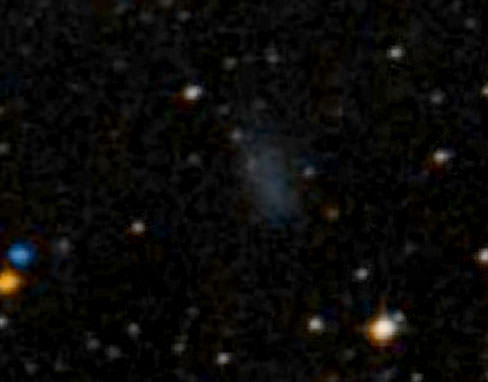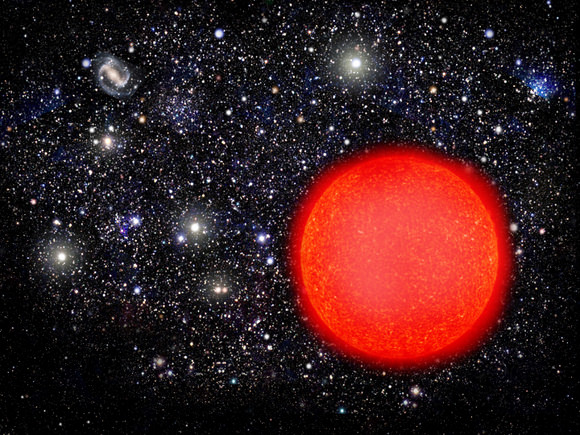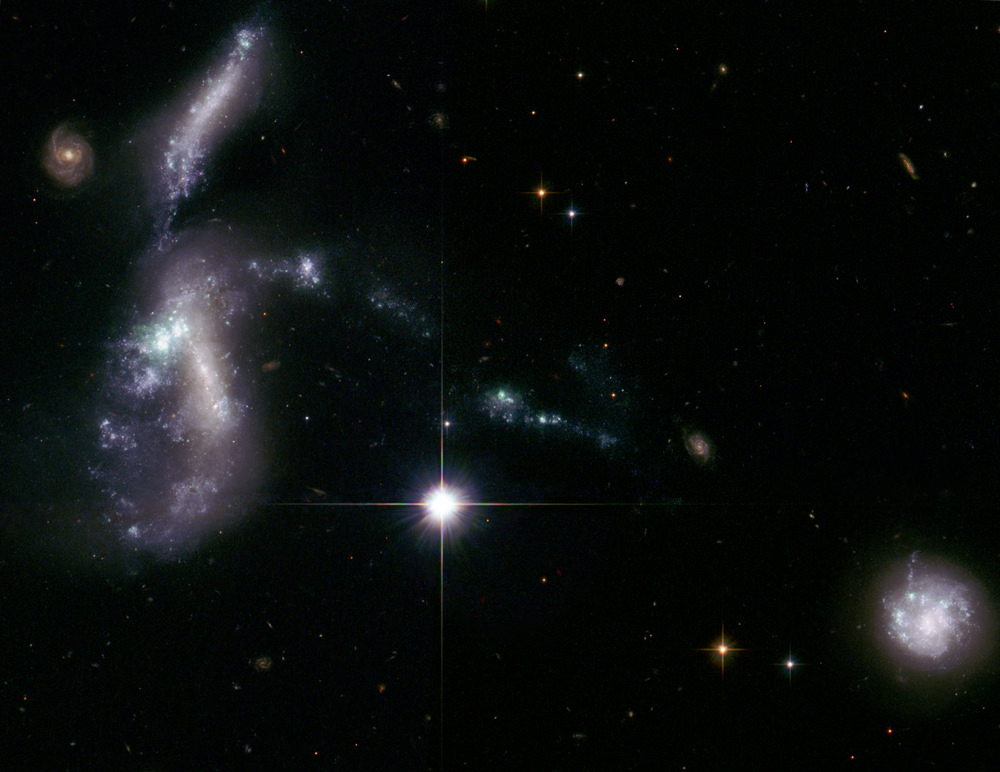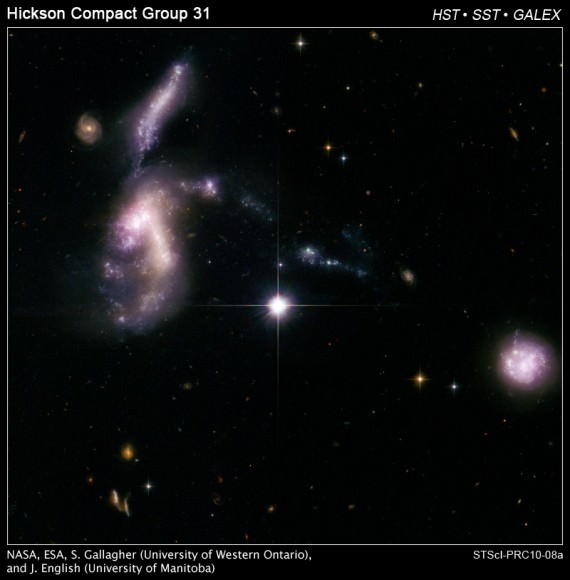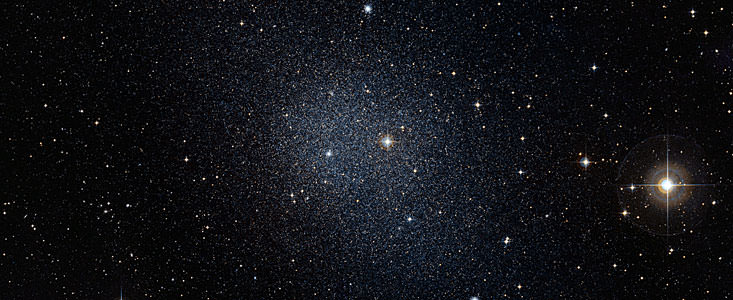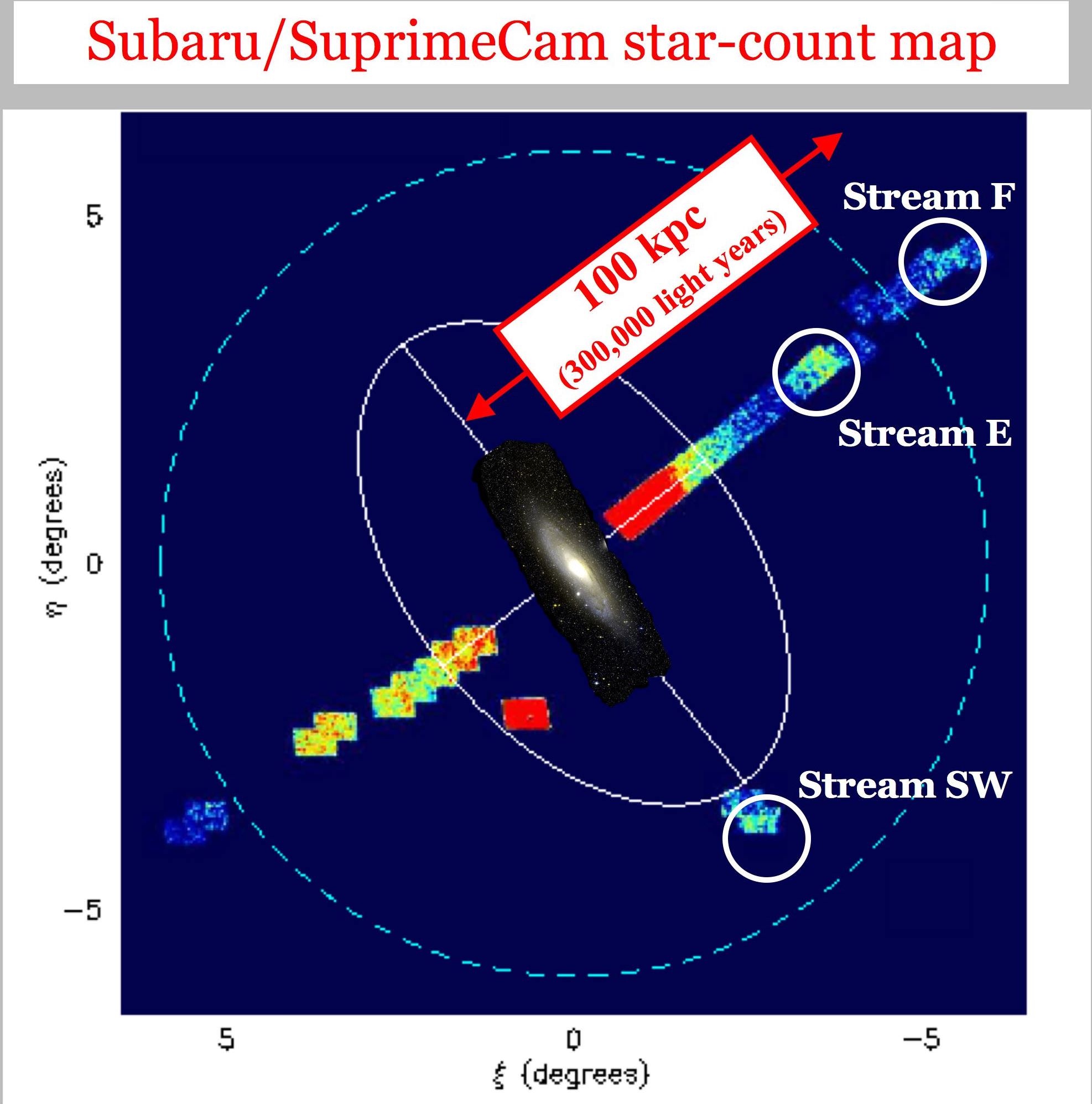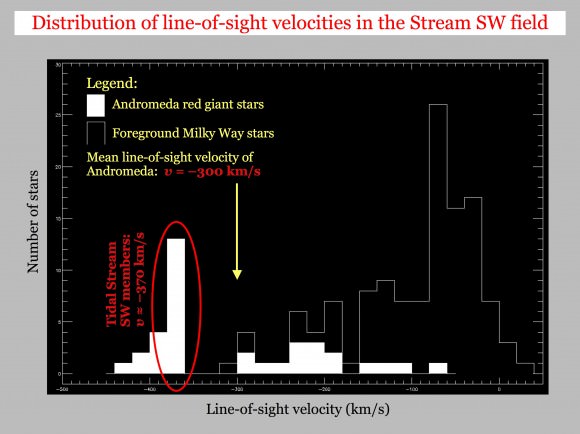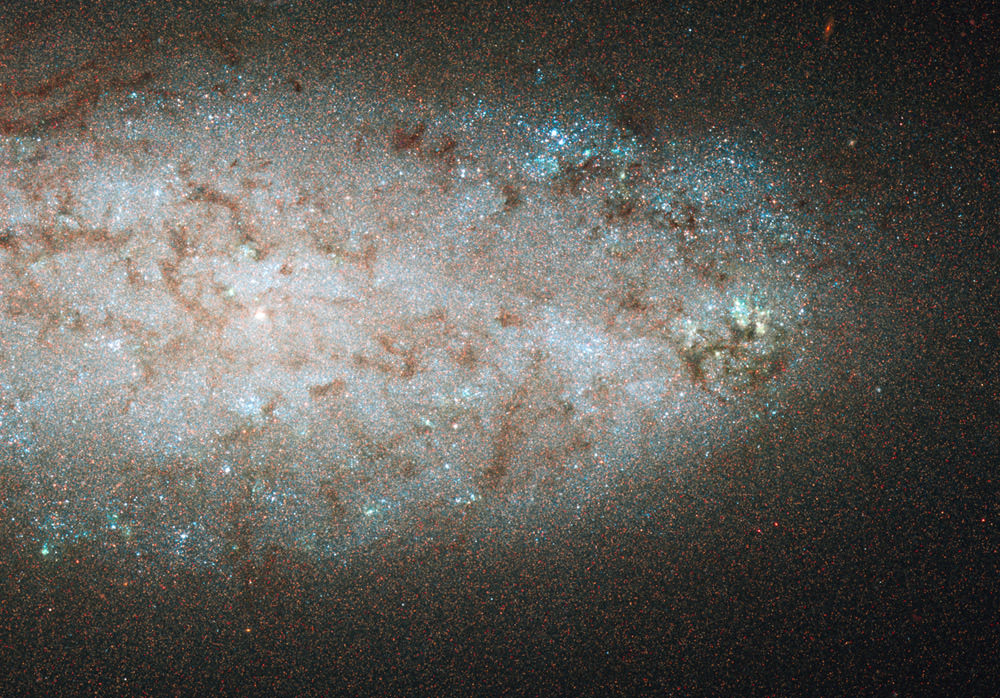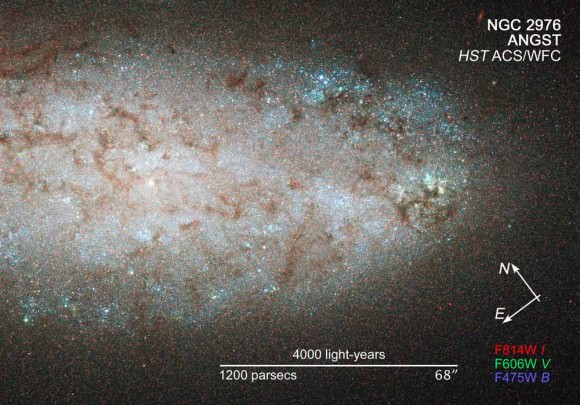[/caption]
The vast majority of galaxies exist in clusters. These clusters are joined on larger scales by filaments and sheets of galaxies, between which, gigantic galactic voids are nearly entirely free of galaxies. These voids are often hundreds of million of light years across. Only rarely does a lonely galaxy break the emptiness. Our own Milky Way rests in one of these large sheets which borders the Local Void which is nearly 200 million light years across. In that emptiness, there have been tentative identifications of up to sixteen galaxies, but only one has been confirmed to actually be at a distance that places it within the void.
This dwarf galaxy is ESO 461-36 and has been the target of recent study. As expected of galaxies within the void, ESO 461-36 is exceptionally isolated with no galaxies discovered within 10 million light years.
What is surprising for such a lonely galaxy is that when astronomers compared the stellar disc of the galaxy with a mapping of hydrogen gas, the gas disc was tilted by as much as 55°. The team proposes that this may be due to a bar within the galaxy acting as a funnel along which gas could accrete onto the main disc. Another option is that this galaxy was recently involved in a small scale merger. The tidal pull of even a small satellite could potentially draw the gas into a different orbit.
This disc of gas is also unusually extended, being several times as large as the visual portion of the galaxy. While intergalactic space is an excellent vacuum, compared to the space within voids it is a relatively dense environment. This extreme under-density may contribute to the puffing up of the gaseous disc, but with the rarity of void galaxies, there is precious little to which astronomers can compare.
Compared with other dwarf galaxies, ESO 461-36 is also exceptionally dim. To measure brightness, astronomers generally use a measure known as the mass to light ratio in which the mass of the galaxy, in solar masses, is divided by the total luminosity, again using the Sun as a baseline. Typical galaxies have mass to light ratios between 2 and 10. Common dwarf galaxies can have ratios into the 30’s. But ESO 461-36 has a ratio of 89, making it among the dimmest galaxies known.
Eventually, astronomers seek to discover more void galaxies. Not only do such galaxies serve as interesting test beds for the understanding of galactic evolution in secular environments, but they also serve as tests for cosmological models. In particular the ΛCDM model predicts that there should be far more galaxies scattered in the voids than are observed. Future observations could help to resolve such discrepancies.

